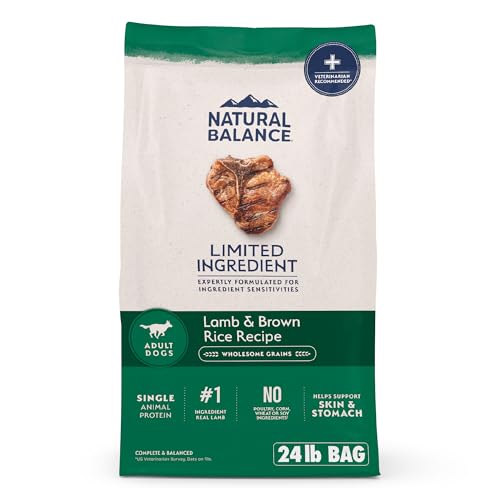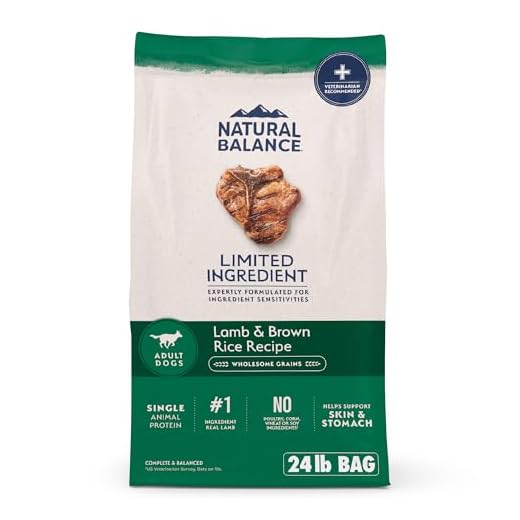

Have you ever wondered how to calculate the ideal nutritional intake for your beloved furry friend? Understanding the energy requirements of our four-legged companions is essential to ensuring their overall health and well-being. As pet owners, it is our responsibility to provide them with a balanced diet that meets their unique needs.
In my quest to decipher the intricate science of pet nutrition, I became fascinated with the world of calories and how they impact the vitality of our pets. It is astonishing to realize that just like humans, dogs require specific amounts of energy to function optimally. However, finding accurate information regarding the calorie needs of our canine companions can be quite challenging.
Careful consideration of our dog’s age, breed, size, activity level, and overall health is of utmost importance when determining their daily caloric requirements. Each dog is an individual, and certain factors such as gestation, lactation, and the presence of any underlying medical conditions need to be taken into account. It is vital to strike the delicate balance between satisfying their nutritional needs and preventing them from becoming overweight or malnourished.
So, how can we calculate the precise amount of fuel our loyal companions require without relying on guesswork? In this article, we will explore the science behind determining the correct caloric intake for our dogs, utilizing various factors and techniques recommended by experts in the field of veterinary nutrition.
Understanding Your Canine’s Daily Energy Requirements
As a responsible pet owner, it is crucial to comprehend the unique dietary needs of your beloved furry friend. Just like humans, dogs require a certain amount of energy to sustain their everyday activities and maintain optimal health. Meeting these energy requirements involves taking a comprehensive approach that considers factors such as breed, age, size, and activity level.
Identifying the Key Factors
When calculating the ideal calorie intake for your dog, several key factors come into play:
- Breed: Different dog breeds have varying metabolisms and energy levels. Larger breeds generally require more calories than smaller breeds.
- Age: Puppies and young dogs have higher energy needs to support their growth and development. As they reach adulthood, their calorie requirements may decrease.
- Size: Small dogs typically have faster metabolisms and higher energy levels per pound of body weight compared to larger breeds.
- Activity Level: Highly active dogs, such as working or sporting breeds, may need more calories to fuel their intense daily exercise. On the other hand, sedentary dogs may require fewer calories to prevent weight gain.
Calculating Your Dog’s Calorie Needs
Estimating your dog’s daily calorie needs requires a basic formula that takes into account the factors mentioned above. While it cannot provide an exact figure, it serves as a helpful guide for determining an appropriate calorie range:
- Determine the Resting Energy Requirement (RER): Multiply your dog’s body weight in kilograms by an appropriate RER value based on its life stage (e.g., 70 for puppies, 30 for adult dogs).
- Adjust for Activity Level: Multiply the RER by a factor that corresponds to your dog’s activity level (e.g., 1.2 for sedentary, 1.6 for highly active).
- Consider Individual Factors: Modify the calculated value based on your dog’s breed, age, and any other specific considerations discussed with your veterinarian.
Keep in mind that these calculations are intended as a starting point. Regular monitoring of your dog’s weight, body condition, and overall health is essential to making adjustments to their calorie intake as needed.
In conclusion, understanding your dog’s daily energy needs is crucial for promoting their well-being and preventing potential health issues. By considering factors such as breed, age, size, and activity level, you can determine an appropriate calorie intake that will help your furry companion thrive.
Understanding Your Dog’s Caloric Requirements
As a responsible dog owner, it is crucial to have a deep understanding of your furry friend’s nutritional requirements. One essential aspect to consider is your dog’s caloric needs. By grasping the concept of caloric requirements, you can ensure that your beloved canine companion receives the proper nutrition for optimal health and well-being.
The Importance of Caloric Intake
Understanding your dog’s caloric intake is fundamental for maintaining their overall health and weight. Just like humans, dogs require a specific amount of calories to sustain their energy levels, support their bodily functions, and maintain a healthy weight. A well-balanced diet that meets their individual needs will contribute to their vitality and longevity.
Factors Influencing Caloric Requirements
Several factors influence your dog’s caloric requirements, and it is essential to take each of them into account when determining their daily caloric intake. These factors include their age, breed, size, activity level, and overall health condition. By considering these elements, you can tailor a diet plan that suits your dog’s unique caloric needs.
Age: Puppies have different caloric needs compared to adult dogs. As they grow and develop, their energy requirements increase to support their rapid growth and development.
Breed and Size: Different breeds have varying metabolic rates and energy levels. Additionally, a dog’s size can also impact their caloric needs. Smaller breeds may require fewer calories compared to larger breeds.
Activity Level: How active your dog is throughout the day plays a vital role in determining their caloric requirements. Highly active dogs, such as those participating in agility or working dogs, may require more calories to sustain their energy levels.
Health Condition: Certain health conditions, such as obesity, diabetes, or thyroid disorders, can affect a dog’s caloric needs. It is crucial to consult with a veterinarian to develop a personalized nutrition plan if your dog has any specific health concerns.
Understanding your dog’s caloric requirements is an essential step towards providing them with a healthy and balanced diet. By considering factors such as age, breed, size, activity level, and health condition, you can ensure that your furry friend gets the right amount of calories to thrive and maintain their overall well-being.
Factors Influencing the Daily Caloric Requirements of Dogs
When it comes to determining the daily caloric needs of dogs, several factors come into play. These factors vary from one dog to another and can have a significant impact on the amount of food and calories they require.
1. Age and Life Stage
Just like humans, dogs have different energy needs at different stages of their lives. Puppies, for instance, generally have higher energy requirements due to their rapid growth and development. Adult dogs have different caloric needs depending on their activity levels and whether they are spayed/neutered. Senior dogs may have lower energy requirements due to reduced activity and metabolism.
2. Size and Body Condition
The size and body condition of a dog play a crucial role in determining their caloric requirements. Small or toy breed dogs typically have higher metabolic rates and may require more calories per pound of body weight compared to larger breeds. Additionally, overweight or obese dogs may need a reduced calorie intake to promote weight loss and maintain a healthy body condition.
On the other hand, dogs engaged in strenuous activities such as working or sporting dogs may have higher caloric requirements to meet their energy demands. It is important to consider the specific needs and characteristics of each individual dog when determining their daily calorie intake.
Remember, providing your dog with the correct amount of calories is vital for their overall health and well-being. Proper nutrition, tailored to their specific needs, is key in ensuring they maintain a healthy weight and optimal energy levels.
Understanding the Optimal Caloric Intake for My Canine Companion
As a responsible dog owner, it is crucial to provide your furry friend with the right amount of calories to maintain their health and well-being. Calculating the optimal caloric intake for a dog requires a deep understanding of their individual needs and factors such as their breed, size, age, activity level, and overall health condition. By taking these aspects into consideration, we can ensure that our beloved canines receive the appropriate nutrition tailored to their unique requirements.
Evaluating Your Dog’s Activity Level
One of the key factors in determining the right caloric intake for your dog is their activity level. Dogs with a high activity level, such as working dogs or those who participate in agility training, require more calories to fuel their energetic lifestyle. On the other hand, dogs who are less active, such as older or less mobile dogs, may have lower caloric requirements. Evaluating your dog’s daily exercise routine will help you gauge their activity level and plan their diet accordingly.
Tailoring Nutrition to Your Dog’s Breed and Size
Each dog breed has unique characteristics and traits that can influence their metabolic rate and overall nutritional needs. For example, small breed dogs tend to have faster metabolisms, requiring more calories per pound of body weight compared to larger breeds. Additionally, the size of your dog plays a role in their caloric intake; a small dog will generally require fewer calories than a larger one. Consulting with your veterinarian and researching breed-specific dietary recommendations will aid in determining the appropriate caloric intake for your furry family member.
Creating a balanced and healthy diet for your dog is crucial for their overall well-being. It is essential to provide them with the proper amount of calories to maintain a healthy weight and support their growth and development. Remember to consult with your veterinarian to ensure you are meeting your dog’s unique nutritional requirements for optimal health. With the right caloric intake, your dog can thrive and enjoy a long and happy life by your side.
FAQ
How do I calculate the daily calorie needs of my dog?
To calculate the daily calorie needs of your dog, you should consider factors such as the dog’s weight, age, activity level, and breed. Generally, the formula for calculating the calorie needs is: (dog’s weight in kg) * (30 + dog’s activity level). However, it is always recommended to consult with a veterinarian for a more accurate estimate based on your dog’s specific needs.
What is the average number of calories a dog needs daily?
The average number of calories a dog needs daily depends on its size, age, and activity level. As a rough estimate, most adult dogs require between 25-30 calories per pound of body weight to maintain their current weight. However, this can vary and it is important to consider individual factors and consult with a veterinarian for a more precise calculation.
Are there any signs that my dog is getting too many or too few calories?
Yes, there are signs that can indicate if your dog is getting too many or too few calories. If your dog is gaining weight or becoming overweight, it may be consuming too many calories. On the other hand, if your dog is losing weight, lacking energy, or showing signs of muscle and coat deterioration, it may not be getting enough calories. It’s important to monitor your dog’s weight and overall health, and if any concerns arise, consult with a veterinarian to adjust its calorie intake accordingly.







